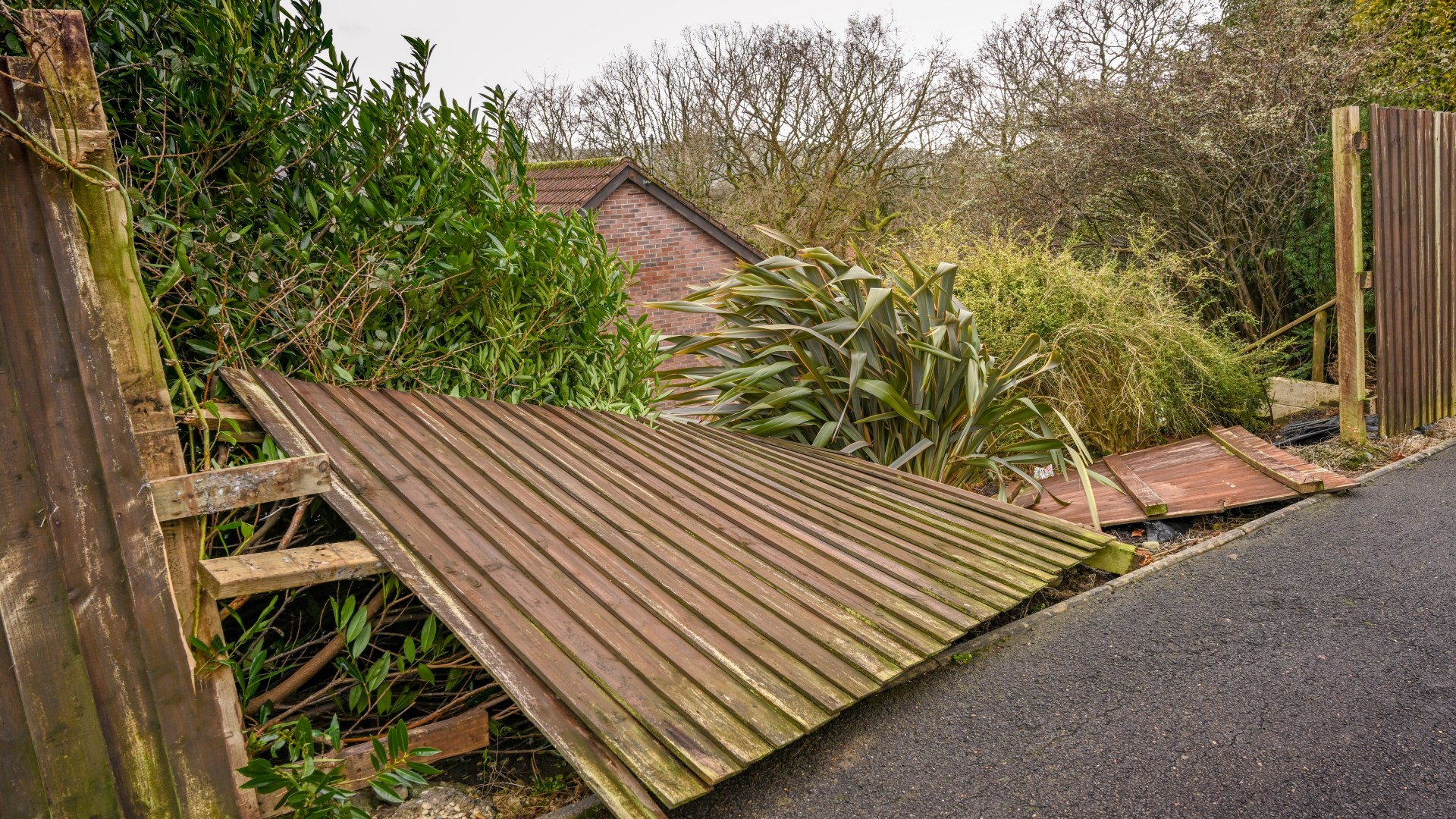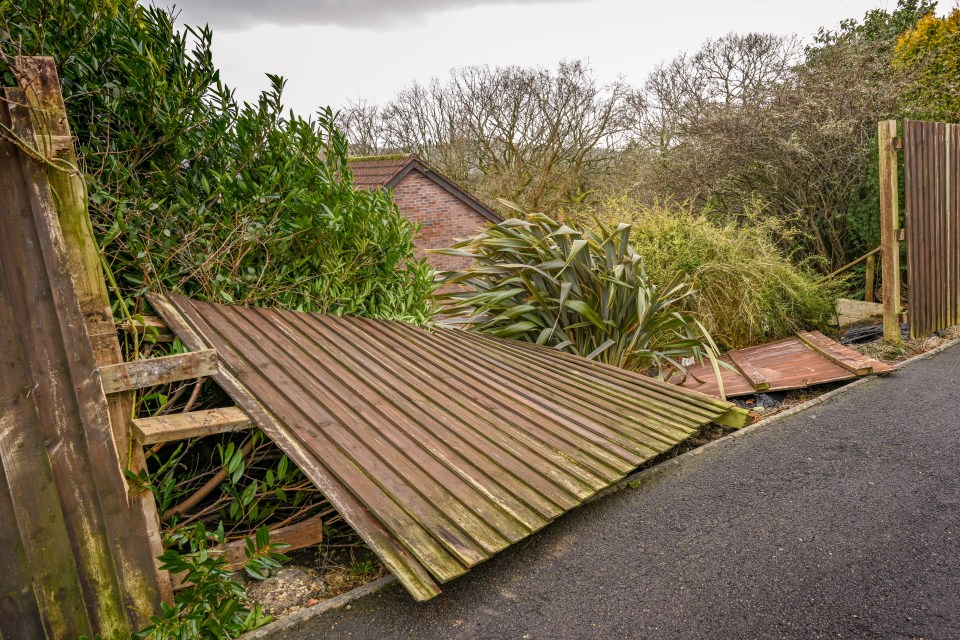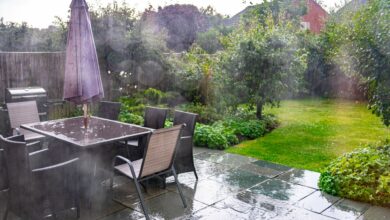How to keep your garden safe during the storms next week



Britons are bracing for more heavy rain and strong winds as the remnants of Hurricane Kirk head towards Britain.
The Met Office warned of very ‘unsettled’ conditions in the coming week, just days after flash flooding hit parts of the country.
With this in mind, there’s no better time than now for Brits to take steps to protect their gardens from harsh weather.
Experts at Dino decking boards have revealed the best measures you can take to prevent damage to your gardens this autumn/winter.
Protect your plants
Maybe you’ve been growing beautiful plants and flowers over the past few months, so the last thing you want is for storms to ruin all your hard work.
Persistent wind causes the stems of plants and flowers to break, blow away or fall over. In addition, this harsh weather causes plants to dry out quickly, which can cause them to die.
To protect them, windbreaks are an effective way to reduce the amount of wind reaching your plants. You can use fences, walls or strategic hedges to protect your plants while providing privacy and security for your home.
Garden netting can also be used to cover large areas with plants or loose plants. Make sure the mesh is made of durable material and use it all year round for maximum protection.
For plants that are difficult to move or cover, your best chance of survival comes from getting them into the best shape possible.
You can do this by pruning your plants just before the storm hits to ensure that there are no loose branches that can easily break off in strong winds.
Protect garden furniture
Overall, the best way to protect your furniture is to store it in a shed or garage to prevent damage to the items themselves, as well as to your belongings. Light furniture such as chairs can break windows if left alone in windy conditions.
However, if you don’t want to put your outdoor furniture away just yet, here are a few ways to secure them.
One of the easiest ways to keep your furniture from blowing away is to tie them together. Stack patio chairs on top of each other and secure them with rope to make them heavier and less likely to fly all over the place and break.
To further protect furniture, consider purchasing a heavy-duty furniture cover that is made of waterproof material. Make sure it fits tightly over your furniture so it won’t blow off.
It is not uncommon to see swinging chairs, trampolines and waste bins flying around during a windy spell. To prevent this, it is important that anything that is not secured in place is weighed down with anchors.
Secure gates
If you notice that the fences are rotting, broken or crooked, these are signs that your fence needs to be replaced or repaired.
Failure to secure your fences can pose a safety risk and can also lead to further damage.
Firstly, a broken fence will be less stable and likely to fall over when the high winds start, which could injure anyone standing near it – and result in a possible lawsuit or a hefty fine, as you will be liable for any incidents that occur your property.
Secondly, if one part of the fence falls, the rest of the fence can fall, putting your yard at risk and also compromising privacy.
Check your drainage system
Strong winds are often accompanied by large amounts of rain. If your drains aren’t functioning properly, it can increase the chance of flooding and waterlogged plants.
A good drainage system ensures that water can flow freely through it. However, it is common for dirt, debris, mud and leaves to build up and slow the flow of water.
Garden work in October

Veronica Lorraine, garden editor for The Sun, has shared the jobs you need to tackle this October.
“It’s a good time to prune deciduous hedges – such as boxwood, yew, hawthorn, hornbeam and beech – and hedge trimmers are a great upper body workout!
Make a leaf shape: Collect all fallen leaves and fill garbage bags or plastic carrier bags. Seal the top, poke a few small holes in the bag and store for a year or more. Free compost!
You’re unlikely to get any more red tomatoes, so harvest one more time and throw the plants into the compost. See if you can ripen the green ones by putting a drawer in them (some say with a banana). Save the seeds from a few too – and plant them again next year if they have gone well.
Finish bringing in your spring bulbs. Ideally you would have planted daffodils and alliums, but tulips are better in the open ground when the soil temperature gets a bit colder.
It is good to leave some plant waste in the ground; this adds nutrients as it rots, providing shelter and food for insects. But remove the dingy brown bits that are collapsing all over the lawn/winter structure.
Mulch – it not only suppresses weeds, but also keeps the soil warm, improves water retention and adds a little winter comfort to your outdoor space.
October is a good month for carrots, peas, asparagus, broad beans and rhubarb.”
To eliminate the chance of clogging, it is essential to carry out regular maintenance and repair work, along with installing drain covers to prevent small objects from clogging the drain.
If you notice that the water is not draining properly, pour boiling water down the drain to further help loosen any clogs.
Make sure your trees are protected
The wind can cause branches to break and even collide with houses. Not only can this be expensive to repair, it can also be life-threatening.
It is worth inspecting your trees to see if there are any cracks in the wood or if any branches are dead.
To keep your trees protected, water them regularly to prevent the leaves from drying out, especially on windy days. You may also want to mulch and spread a thick layer around it.
To keep your trees protected, water them regularly to prevent the leaves from drying out, especially on windy days.
You may also want to mulch and spread a thick layer around the trees to protect the soil from wind and water.





